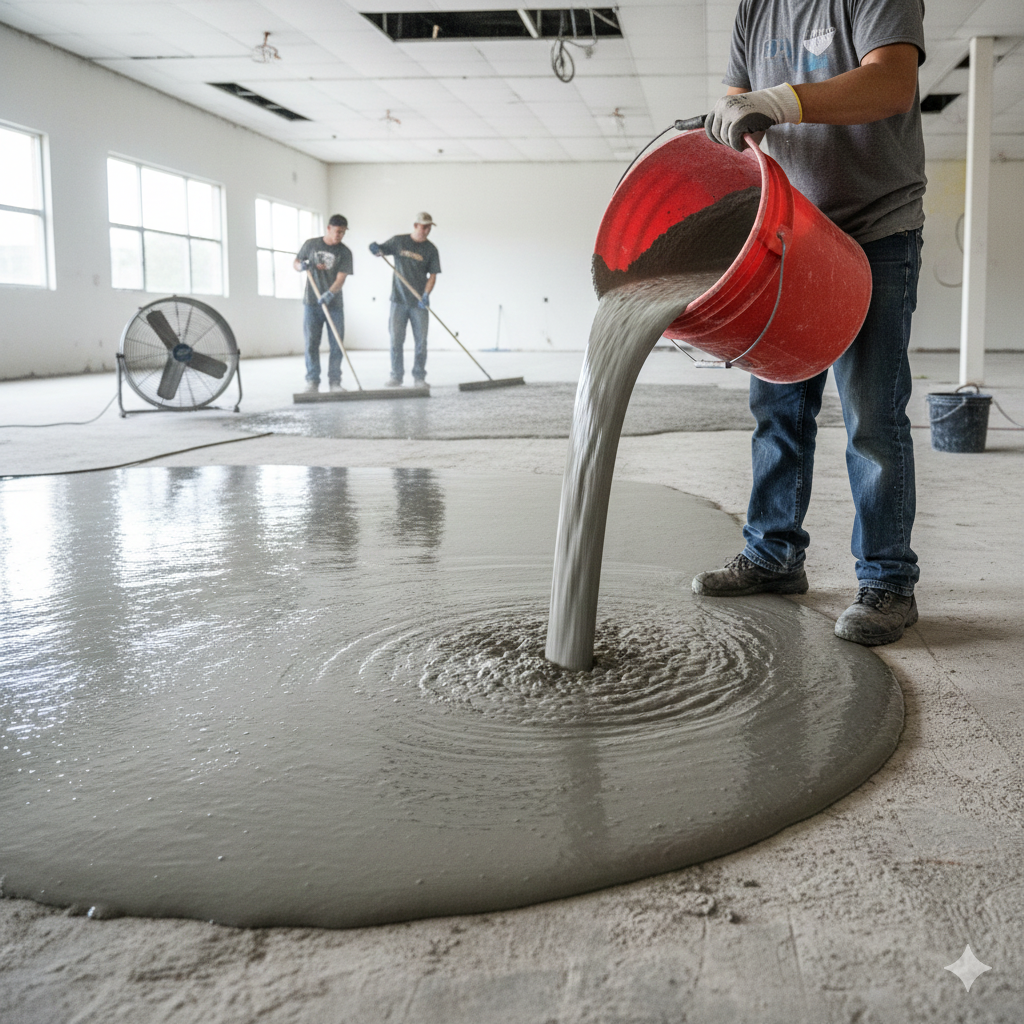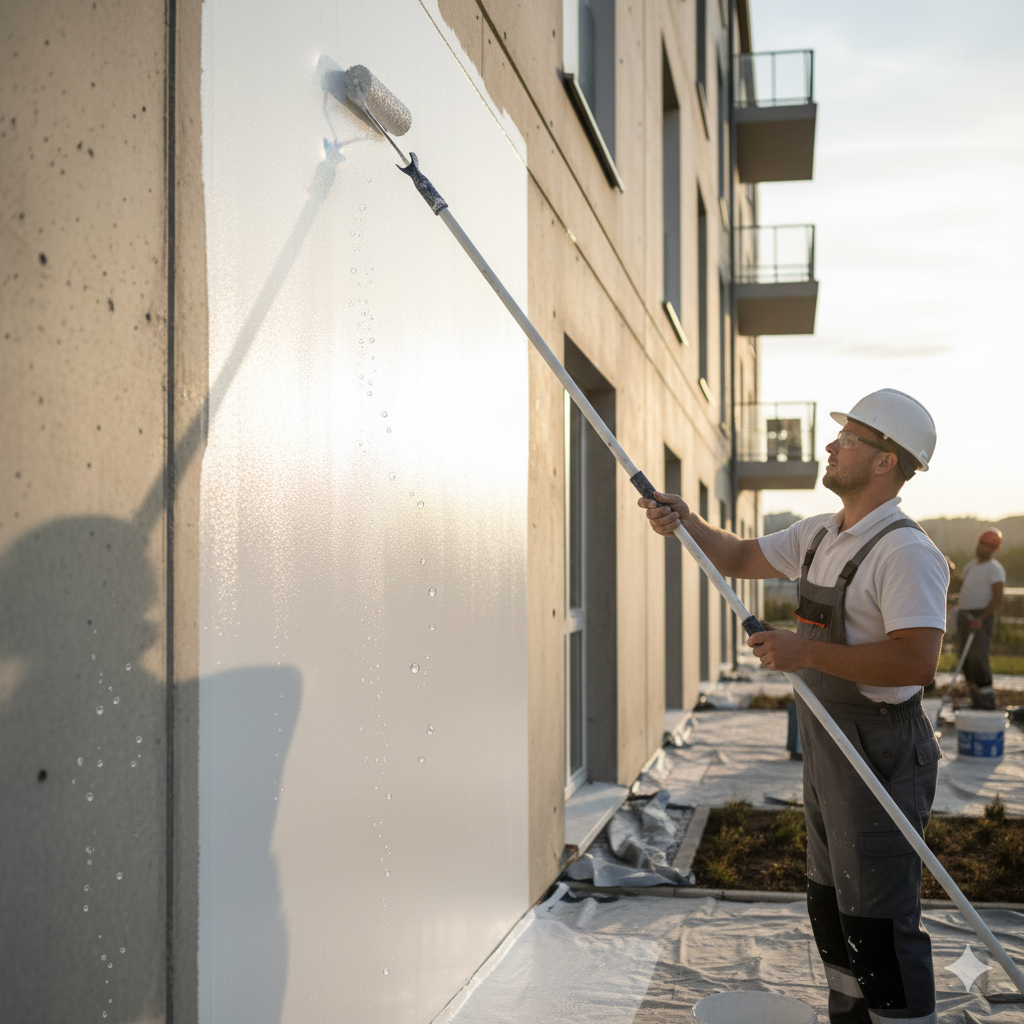
Self-Leveling Cement: Creating Flawless Floors That Stand the Test of Time
Walk across an old concrete floor and you’ll feel every rise and dip beneath your feet.
Those slight waves might look harmless—but for tile layers, epoxy installers, or interior designers, unevenness means structural weakness.
That’s why modern flooring systems increasingly rely on self-leveling cement: a material engineered to flow, flatten, and form a perfect foundation.
1 | The Hidden Problem Beneath Every Floor
Most floor failures don’t start from the top surface—they start from beneath.
Traditional mortars or manual screeds often cause:
-
Height deviations > 5 mm across small areas.
-
Hollow spots leading to weak adhesion.
-
Cracking from shrinkage or stress concentration.
-
Poor bonding when applied on dusty or unprimed concrete.
In commercial flooring, even a 2 mm dip can ruin machinery alignment or lead to tile debonding under thermal stress.
Self-leveling cement corrects these microscopic imperfections before they become macroscopic failures.
2 | The Science of Flow and Flatness
Self-leveling cement isn’t ordinary mortar—it’s precision rheology at work.
The mix contains high-flow polymer binders, plasticizers, and defoamers that enable it to spread evenly under its own weight.
| Component | Function | Technical Effect |
|---|---|---|
| Polymer additives | Improve flow and flexibility | Maintains uniform thickness |
| Calcium aluminate cement | Rapid hydration | Walk-on time < 4 hours |
| Micro-fillers (≤ 100 μm) | Densify matrix | Shrinkage < 0.05 % |
| Fiber reinforcement | Crack control | Flexural strength > 7 MPa |
| Defoaming agents | Prevent air bubbles | Smooth surface finish |
Under EN 13813 standards, premium self-leveling cements achieve surface flatness of ≤ 2 mm per 2 m—essential for high-end tiling and vinyl flooring.
3 | System Comparison: Which Formula Performs Best
| Type | Binder Base | Key Advantages | Recommended Application |
|---|---|---|---|
| Cementitious Type | Portland / Calcium aluminate | Economical, fast curing | Residential floors, indoor renovations |
| Polymer-Modified | Latex / Acrylic blend | High bond strength & flexibility | Commercial tiles and vinyl finishes |
| Epoxy-Enhanced | Two-component resin system | Superior chemical resistance | Industrial and warehouse floors |
| Fiber-Reinforced | Cement + micro fibers | Anti-crack durability | Large slab areas and warehouses |
The right system depends on substrate condition, load requirements, and final finishing material.
There’s no one-size-fits-all—each mix is engineered for a specific balance of flow rate and compressive strength.
4 | Why YUNYAN Self-Leveling Cement Sets a Different Standard
Every bag of YUNYAN self-leveling cement is formulated with:
-
Dual-flow rheology: spreads smoothly without segregation.
-
Controlled curing system: resists cracking during rapid hydration.
-
Micro-silica enhancement: improves bond to old substrates.
-
Low VOC composition: eco-compliant for indoor use.
YUNYAN’s technical labs simulate thermal cycles and traffic loads to ensure flatness retention even under heavy industrial conditions.
5 | Practical Applications and Best Use Scenarios
| Project Type | System Choice | Thickness Range | Curing Time |
|---|---|---|---|
| Apartment renovation | Cementitious | 3 – 10 mm | 3 – 4 hrs walk-on |
| Commercial showroom | Polymer-modified | 5 – 20 mm | 4 – 6 hrs |
| Warehouse floor | Fiber-reinforced | 10 – 30 mm | 6 – 8 hrs |
| Factory epoxy base | Epoxy blend | 2 – 5 mm | 12 – 24 hrs |
When properly installed on a clean, primed base, self-leveling cement creates a surface so precise that tile or vinyl adhesives bond more efficiently and last longer.
6 | Installation Mistakes to Avoid
-
Skipping primer → leads to delamination.
-
Over-watering mix → weakens compressive strength.
-
Uneven pouring speed → creates ripples or cold joints.
-
Ignoring temperature limits → poor hydration in cold weather.
-
Walking too soon → surface indentation before set.
Good installation is half the material’s strength.
Even a superior formulation fails when technique is ignored.
7 | From Foundation to Finish: Building Lasting Floors
Smooth floors are not a luxury—they are a structural requirement for modern interiors.
From residential projects to industrial plants, self-leveling cement delivers precision and durability that manual methods can’t match.
For detailed specifications, technical data sheets, or OEM cooperation inquiries, visit the official YUNYAN website.
If you’re planning a large-scale flooring project or need custom material advice, contact our engineering team via contact page for personalized guidance.





